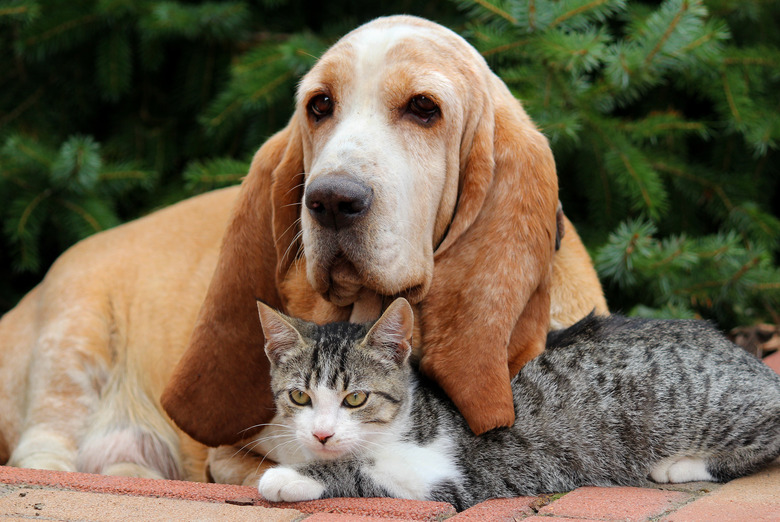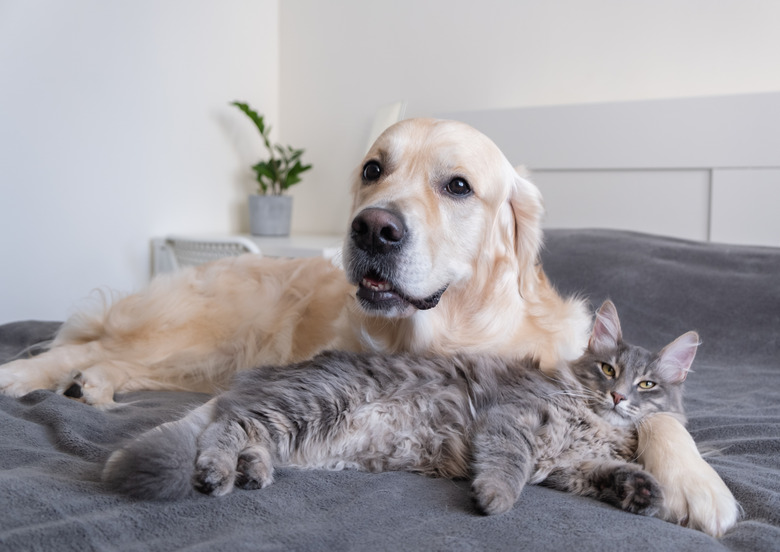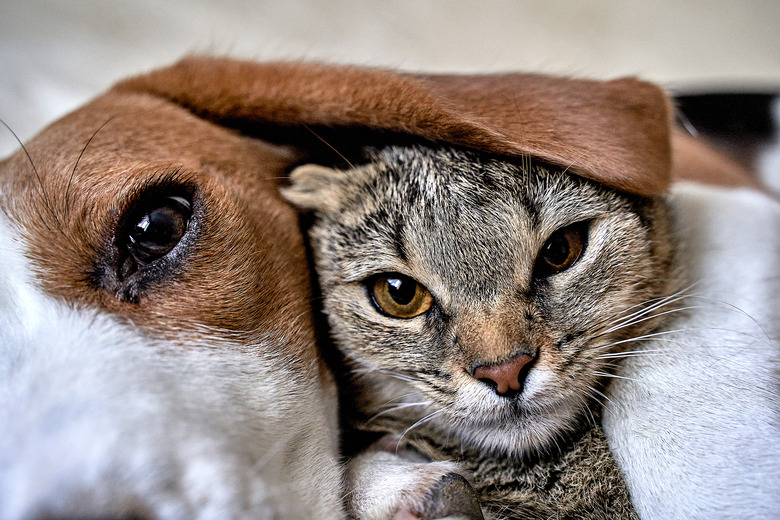11 Dog Breeds That Get Along With Cats
Sometimes, it's hard to decide whether you're a dog family or a cat one, so you just do both. But mixing cats and dogs isn't something to rush into. Finding dogs who are good with cats is a wise move since you want to avoid screeching standoffs, nips, and scratching.
As you learn what dogs are good with cats, consider the pup's temperament, age, and background. Puppies are pretty much a clean slate, which means you can teach your little guy how to get along with Fluffy. On the other hand, a rescue or older dog may find it harder to acclimate to a house with a feline.
Dogs that are good with cats
Dogs that are good with cats
Matching the right dog breeds with cats is a matter of learning about certain types and how they tend to operate around other animals. Lots of folks ask, "Are golden retrievers good with cats?" because the golden consistently ranks near the top of official lists as one of the most popular dog breeds in America. For cat-friendly dogs, check out the following:
- Golden retriever
- Bulldog
- Beagle
- Pug
- Boxer
- Labrador retriever
- Collie
- Papillon
- Maltese
- Labradoodle
- Basset hound
Learn the dog's temperament
Learn the dog's temperament
Breed details are helpful as you find dogs who are good with cats, but since every dog is an individual pup within her own type, it's a good idea to assess a dog's personality and tendencies.
For example, if the dog you're considering tends to lunge, growl, or otherwise try to attack his fellow littermates, think twice about pairing him with your cat. And a canine who lives to give chase could end up scaring your kitty or treeing her out in the yard. If you can, ask the breeder or rescue organization about your potential dog's ability to get along with others as well as how much he barks and whether he has displayed aggressive actions in the past.
Make careful introductions
Make careful introductions
Dogs of breeds that get along with cats are generally successful if the way they're brought together is well planned. To this end, make sure the dog you bring home is presented on your cat's home turf so she feels comfortable and safe. Next, allow them to get used to each other when one animal is crated or confined for a short time; this way, the "free" pet can explore and smell the other one. If you're away from home, make sure both animals are tucked away in separate spots.
When you think your two pets are ready, let them meet face to face but keep your canine tethered to a leash. If your pup allows your kitty to eat and use her litter box without any fuss (barking, snarling, swiping of paws), then you can give both animals a chance to meet without the leash. Keep tasty treats on hand for your dog if you find him staring at the cat. The idea is to break him of this habit and distract him so he doesn't fixate on the cat or menace her in any way.
When to seek professional help
When to seek professional help
If you find your new dog has trouble around the cat when he's off leash, put this device back on him for a while. Taking a step back in terms of training these two to live in peace is sometimes necessary if there's initial friction.
Keep in mind that the introduction process could take weeks or months to be successful. If your dog constantly has trouble leaving the cat alone or he tries to enter the safe area when the cat eats and sleeps, it's time to call in a professional trainer. With the help of this expert, your pup can learn to look your way when the cat is present or come when called so he can receive his yummy reward and not bother his housemate.


